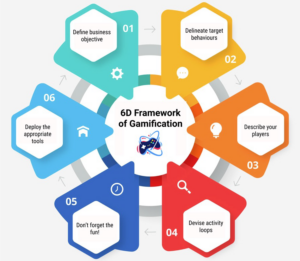How to Motivate & Engage Your Audience in Change
It’s no secret that highly engaged employees improve company performance, but they can also make your transition to change quicker and more effective.
According to research conducted by Gallup.com1 of almost 1.4 million employees, it reaffirms the connection between employee engagement and performance. Nine performance outcomes were measured, showing that employee engagement is a strong and important predictor of individual performance, productivity, profitability, and customer service rating.
So, when we introduce change into the mix, it’s vital to keep that engagement high to ensure all individuals care enough about the change to help receive the change and encourage the change in their working community.
“Motivating and inspiring” others during change is one of the three key components of change leadership, according to Kotter2. So, how do we lead well so that we can motivate and engage our audience to effective and successful change?
A former guest speaker of the Change Management Institute, Barb Grant3, Lead Change Management Practitioner of [email protected] (Wellington, New Zealand), gives us some great starting points on getting that ultimate engagement.
Clearing the Decks
She says being present is a really important part of engaging and motivating people.
Barb recommends the simplest way to do this is to take a few deep breaths and let go of whatever you have just come from, been working on or worrying about and make sure that you start focused and present with the people in the room.
This can also be a great way to start a session with either a small group, one-on-one or even a large audience. Everyone you connect with has competing challenges and things going on both professionally and personally, so this is an effective way to “clear the decks” so to speak.
Empty Sky
When in a facilitator role, Barb warns having too much on your agenda or trying to control too much of the conversation prevents you from getting into true creative expansiveness and coming up with the bold and most effective ideas and solutions.
This can also severely stunt your engagement with others, if they feel you are simply ticking off your list and rushing through things without giving time and space for ideas to marinate, feedback to be heard or discussions to take place.
Empathy
Barb endorses walking in someone else’s shoes, even for just a minute, accepting their experience and their truth is a strong way to engage with them and help you understand where to go to meet their needs and focus your outcomes.
By showing empathy towards employees not only helps with engagement but can also help to build trust, respect and a feeling of being heard. Trust is a vital part of leading change and respect for the changes you are leading is an absolute necessity, therefore starting with simply hearing employees and showing empathy is a great way to build both of these and get the all-important engagement required for effective change.
As social beings, communication is a key component of engagement. The late Alison Davis4, founder of award-winning employee communication firm Davis & Company (New Jersey, USA) describes five communication strategies to create engagement in change communications5.
In this article6 we recognize and remember the incredible work Alison Davis has contributed, as a universally acknowledged expert in employee communications.
Debunk Rumors
After changes are announced, employees are likely to turn to each other to voice their anxieties, exchange their concerns and gossip about it. Alison says to use this to your advantage, by creating casual coffee chats with no agendas and allow for open dialogue. Scheduling senior leaders to take the time to have a coffee catch-up with their employees creates an atmosphere where they feel they can voice their feelings and those concerns directly to management.
By the end of the conversation, the manager will have a better understanding of employees’ issues and be able to better engage with them on the change, taking the issues into consideration.
Empower Employees to Play a Key Role
During the process of change, Alison recommends employing Change Champions to educate on what is happening and the next steps. Some of their responsibilities could be to rally enthusiasm about the change and build awareness and understanding of the expected transitions, listen to other employees’ concerns, collect feedback, and identify any gaps in knowledge.
Change Champions can be your eyes and ears on the ground and really help to create motivation and engagement within teams for the transitions to come.
Create High-Touch Experiences
One of the most effective ways to create engagement is to provide the opportunity to be interactive. Alison describes one of the easiest ways to do this is by holding problem-solving sessions. She says when employees are involved in figuring out the details of the change, they’re more committed to seeing it through, so include them in helping to shape the processes involved in the transitions.
Ramp Up Wellness Efforts
Alison says wellness and employee-engagement go hand-in-hand. When employees are feeling their best mentally and physically, they are happier in the workplace.
Of course any changes in the workplace have a tendency to create stress amongst employees, so it’s a positive idea to motivate and engage employees with wellness offerings, perhaps holding meditation sessions during lunch breaks or offering an in-house masseuse to provide shoulder massages or even putting aside a regular fortnightly or monthly afternoon for a team building exercise or social event or simply providing a discount coffee scheme with a local café for employees. A little goes a long way and after all, happy employees are engaged employees.
Celebrate Success
Alison recommends celebrating achievements along the way to recognize employees’ commitment to the transitions and help to keep them motivated and engaged in the process of change.
Celebrating small steps in the process of change helps to show employees that the transitions although small are happening and the processes in place are working. Recognition is also an important part of this celebration and can help to motivate other employees to get on board. Before you know it, a few small steps of success result in an effective overall change.
Another great and enjoyable way to motivate is using the gamification technique. Euan Wu7 (Sydney, Australia), a former guest speaker of The Change Management Institute and Director of The Change Compass tells us Gamification is about applying game design to non-game situations, with the real essence focusing on better engaging stakeholders.
Whether it’s creating a challenge, turning goals into points, having a leaderboard, playing against yourself or other colleagues or simply having fun, gamification can be a really successful way for people to adopt change. Bringing out people’s natural curiosity, playfulness and competitiveness as well as creating a sense of achievement and community is exactly why gamification is highly engaging and motivating.
Euan describes the framework of the 6Ds of Gamification in terms of creating change. Don’t forget the all-important Step 5 —bring on the FUN!
In fact a great example Euan gave of successfully changing behavior through gamification was in Stockholm, where they changed a staircase right next to an escalator into piano keys that played notes as they were stepped on. It increased the use of the stairs by 66%.

Image courtesy of Euan Wu
It seems that if fun is more of the focus, then sometimes the change can almost go unnoticed, which can be of huge benefit as it can minimize the stress, anxiety and hesitancy often associated with change. So next time you create a new process or step in your world of change, why not ask yourself if this can be made more fun, entertaining or even a game?
References
- How Employee Engagement Drives Growth Link
- Leading Change, John P. Kotter, 2012, Harvard Business Review Press, Boston, USA
- Barb Grant Blog; 5 Tips on How to Show Up for Effective Change in the Workplace Link
- Alison Davis Blog; 5 Dynamic Ways to Keep Your Employees Engaged During Mergers and Acquisitions Link
- Change Communications Made Easy, David Pitre, CEO of Davis & Company – New Jersey, USA Link
- Remembering Alison Davis of Davis & Company – New Jersey, USA Link
- Using Gamification to Enhance Engagement, Euan Wu Link




